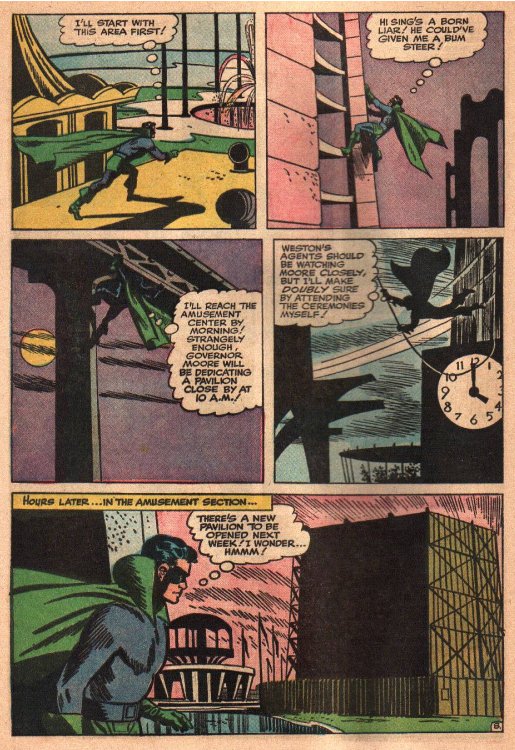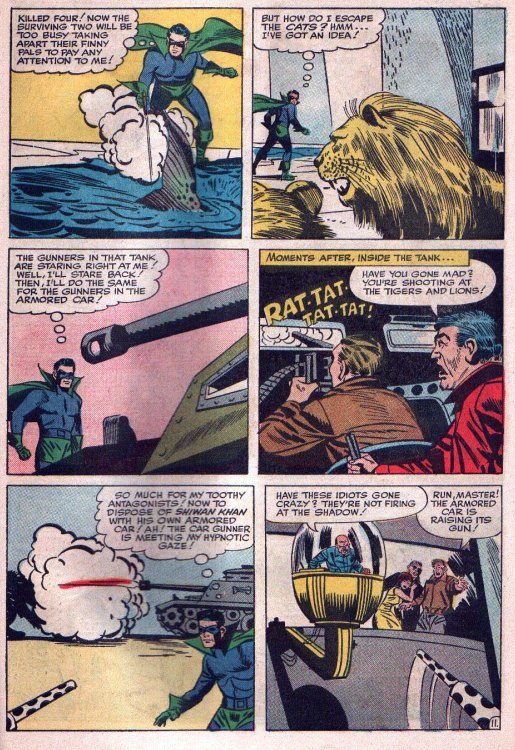When Last We Left Our Hero...
...why do I even need to show up?
The comic itself does the work for me!
See you at the end of the story...
As of this story from Archie's The Shadow #3 (1964), Jerry Siegel replaced Robert Bernstein as scripter.
Paul Reinman had taken over from John Rosenberger as artist for the remainder of the run, as well as assuming art chores for most of Radio Comics (renamed Mighty Comics' shortly after) line of books including The Mighty Crusaders, and Fly-Man.
for goodies featuring other Silver Age heroes, besides The Shadow!














































